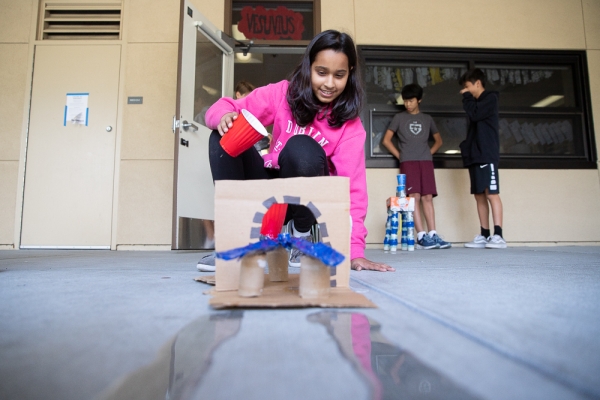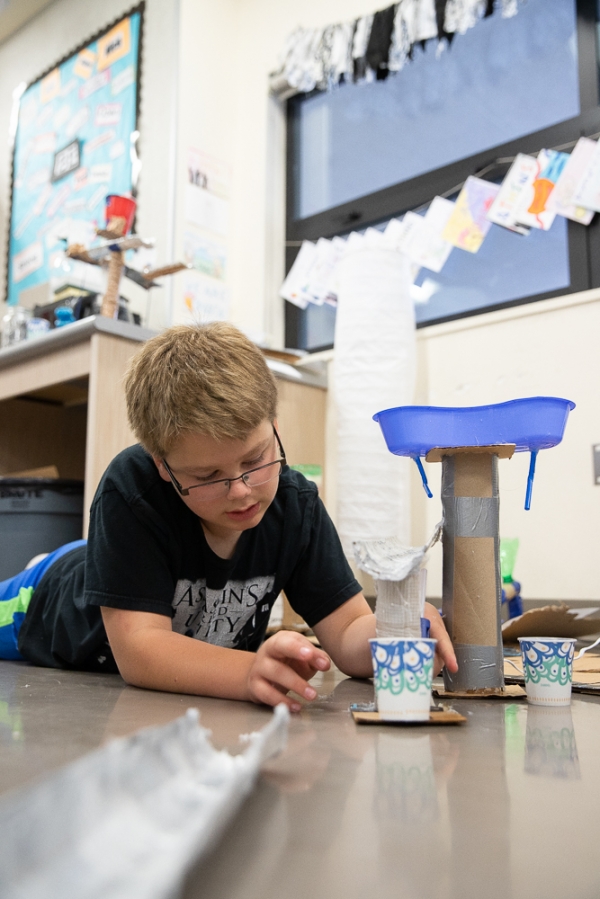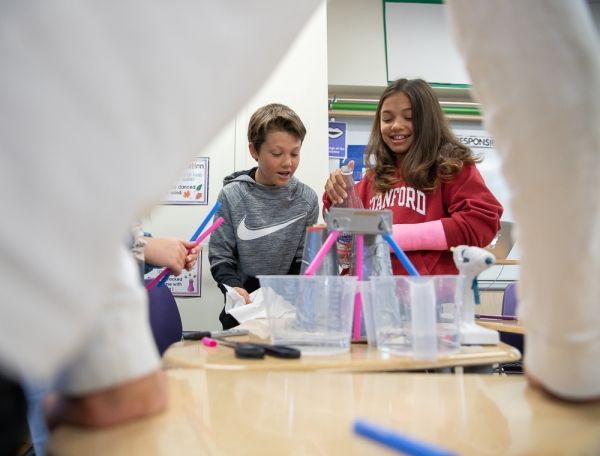Using "design thinking" strategies in the classroom could help lower-achieving students learn better when they're older, according to a recent Stanford University study conducted with Hillview Middle School students.
Stanford Graduate School of Education researchers worked with about 200 sixth graders at the Menlo Park school to study how design thinking techniques -- project-based, hands-on, multidisciplinary ways of solving problems -- impact students' learning abilities. The study, published in the Journal of Learning Sciences on April 15, followed the students during a five-week period in 2014.
The Stanford Institute of Design describes design thinking as combining "creative and analytical approaches, and requires collaboration across disciplines." Design thinking often goes along with project-based learning, in which students study many different subject areas by learning about a broad-based subject.
In the study, students were introduced to two types of design thinking strategies. The first was to ask for constructive criticism and the second was to test multiple different answers to a single problem. Students completed different project-based tasks, such as designing a poster for an activity booth, and improved their projects in further iterations after receiving feedback on what they could improve. Students also completed a photography exercise on a computer in which they could adjust a camera's position and settings and click on a resources tab to look at animated explanations of different camera settings.
"We were pleased to see students spontaneously use the strategies that were taught as part of classroom instruction, in a new situation where there was no guidance to use the strategies," study authors Doris Chin and Kristin Blair said in an email. "We hoped this would be the case, but it is also frequently true (to a surprising degree!) that learners do not recognize when a strategy they learned in one situation would be useful in another. What was really surprising was that the benefits were greatest for the lower achieving students."
Researchers predicted that the highest achieving students would be less likely to seek constructive criticism or try multiple alternatives because they would just want to be right. This wasn't the case.
"The key move in our work is the development of a new kind of assessment that evaluates the choices that students make while learning," the researchers said. "For instance, we developed a game for younger children that sees if they choose to persist in the face of failure."
Menlo Park City School District Superintendent Erik Burmeister, who was Hillview's principal when the research was conducted, said in a May 8 newsletter that "the study reinforces the district's belief that providing the best possible education to all students helps everyone achieve to their potential."
The district, along with nearby schools that feed into the Sequoia Union High School District, is also part of the Stanford Sequoia K-12 Research Collaborative, a research partnership to study the outcomes of students whose first language is not English.
For more on the study, go here.
-





Comments